Banff National Park, Alberta, Canada
This two-week trip was, simply, the best trip of my life. I say this solely to emphasise the amazement I encountered daily in the Canadian Rockies. I don’t always find comparisons helpful – and I appreciate the many other trips I have been fortunate enough to enjoy. The reason this journey stands out, though, is because everything came together – partly due to planning, and largely to luck. The stunning scenery, the wildlife on show, the hiking opportunities, the thrill of the adventure, and sharing it with my partner. Be advised, you may find this piece is based largely around how I felt along the way. I can’t seem to separate the trip from how much I enjoyed it. I hope, at least, you can get a sense of the opportunities the Canadian Rockies offer.
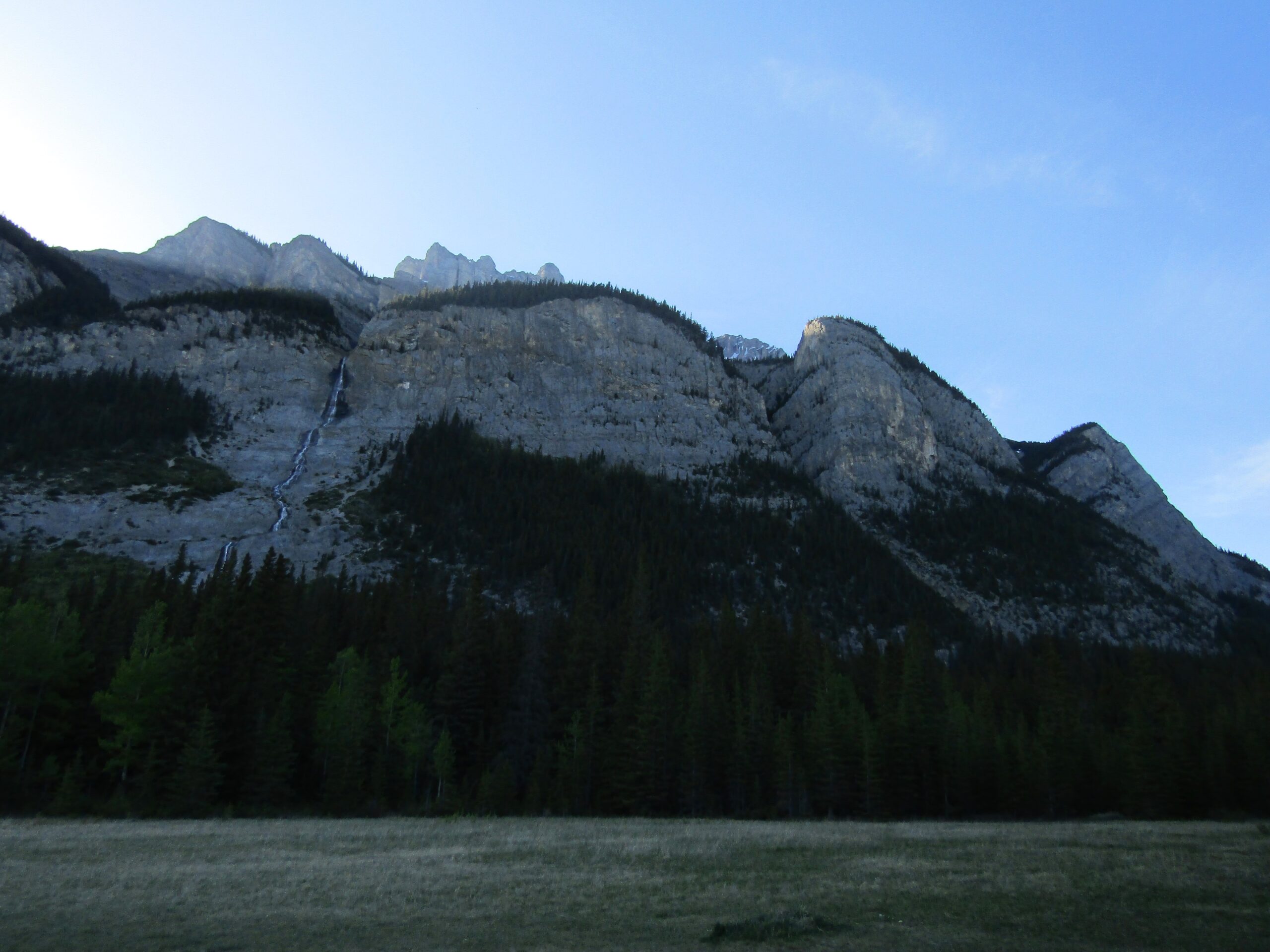
Flying in
We flew from London just before midday, which meant we would arrive around mid-afternoon in Calgary (taking into consideration the flight time and time zone change). We picked up a hire car immediately, with a free upgrade to a large Jeep – which would later reveal itself as a godsend, for the extra space in the back for sleeping – and headed for the mountains, which are around an hour’s drive. It wasn’t long before we could see the outline of the Rockies and, even from the distance, they impose themselves on the skyline.
Surreal is the best word to describe the feeling, when arriving in Banff National Park. The contrast coming from London was stark, a concrete jungle with man-made skyscrapers and endless traffic, to quiet highways, enclosed by deep forests and snow-capped mountains that would dwarf even the Shard. The new surroundings, mixed with tiredness from the extended day and lengthy travel, all contributed to a sense of disbelief – almost like I wasn’t there. It might explain why I woke up so early on our first morning, desperate to get out and experience it.

The awakening
I have never woken up as early with so much motivation as on the trip around the Rockies. No hesitation, trepidation, internal debating about snoozing, bargaining with myself for five more minutes of sleep, or searching for the effort to drag myself up to face the inevitable. It was a great feeling for me, a rare sensation, to have genuine passion for the day ahead. My partner, bless her, humoured me for most of those two weeks, even though I was depriving her of one of her favourite activities; sleep.
Even in the relatively safety of the town of Banff, we were weary of bears on that first mini hike through a small forest. It wasn’t enough to stop us making it to the ridge for daybreak – and watch as the sunlight started to illuminate the valley below – and reveal the landscape we were venturing into. Our stay in town was brief. We picked up food that could sustain on the road for a few days, and supplies for our trip, including bear spray. Then we were off, on the road.

On the road
Driving along the highway in the Rockies is a joy. The wide roads allow magnificent views of the forest and slopes either side. We were blessed with bright blue clear skies those first two days , and the only interruption were the white, snow-covered tips of the mountains, atop the famed grey scraggy peaks: The Rockies.
The snow covers the top of the bare, rocky, alpine territory, before meeting a boundary of pine. Vast forest covers the mountainsides; miles and miles of green, growing taller as they reached the road. The road appears to have been built between two competing ranges, equally impressive on either side, towering over you. The drive itself was a journey, leaving us in awe as our eyes traversed the landscape in the background, and dived between trees in the foreground. We embarked on two gruelling hikes in two days, at Bourgeau Lake and Rockbound Lake – a great way to become immersed in the surroundings.

Sleeping in the car
We slept in the car for most of the trip, bringing comforts from home, such as blankets to lie on, sleeping bags, and pillows. A major source of contention was the quality of the bags we had. Mine, a relic from my childhood, revealed itself to be more suitable for sleepovers in warm homes in England. Steph had treated herself to a thermal bag, designed to keep her warm in Arctic temperatures down to -30 Celsius. And there was no sharing or swapping. So, while I shivered to stay warm, Steph sweated in her sauna.
On the flipside, because the temperature was at its lowest in the early hours, around 5am I was ready to get up and go. Meanwhile Steph didn’t want to face the reality of the temperatures outside of her cocoon. For the first half of the trip, I won the battle, and we were usually on the move by 5:30. My actions weren’t purely out of spite. The early hours are the best time to spot wildlife and avoid the crowds. And we often had the roads and hiking trails all to ourselves. I understand that in the busy summer months – July and August – the parks are very busy. And this could completely change your experience of the wild, if shared with hundreds of other visitors. I can’t help think that being stuck in traffic in the Rockies would taper the feel of the wilderness.
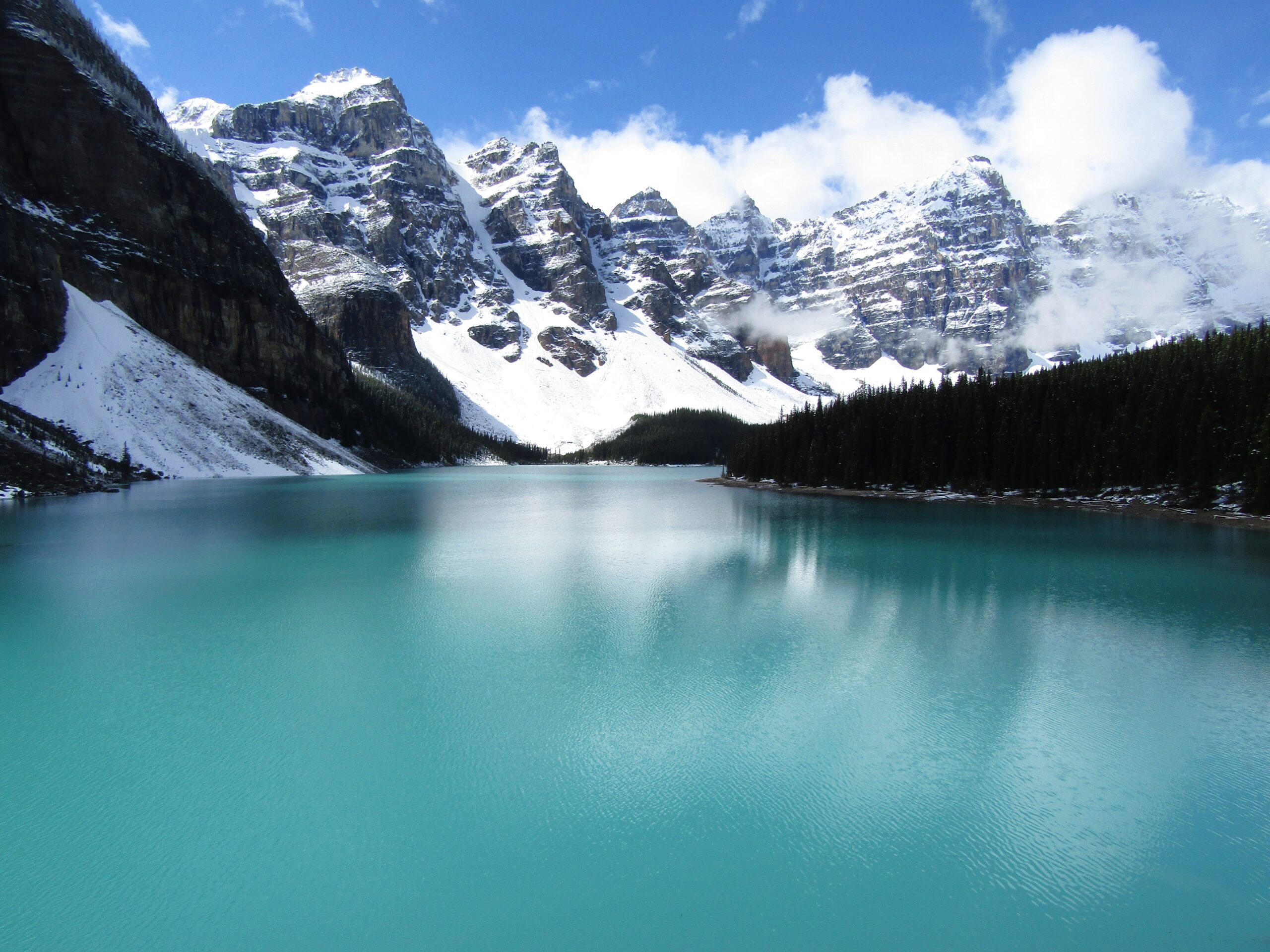
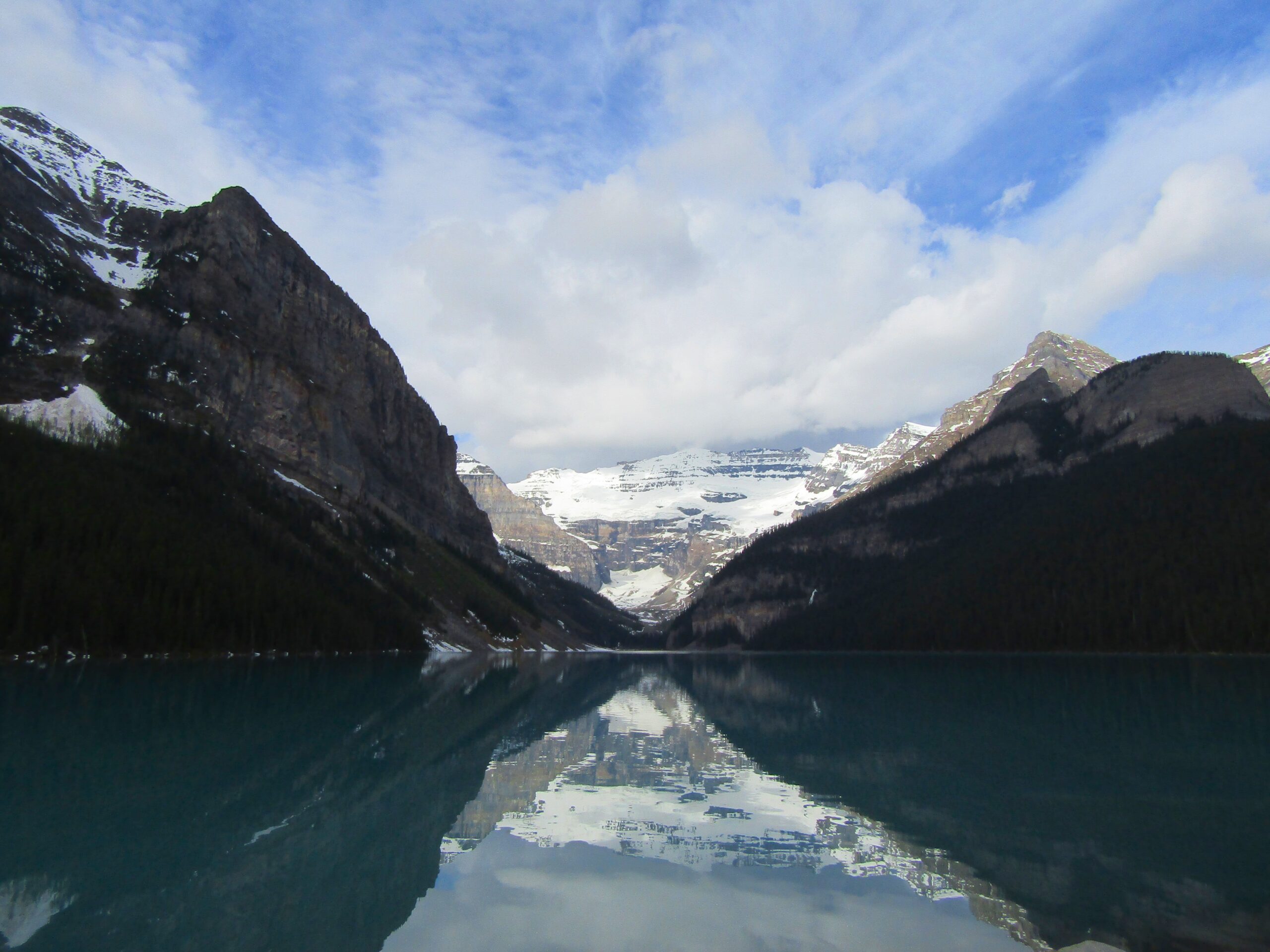
The Lakes
On the fourth night, after a walk around the famous Lake Louise, the weather turned, and the rain came down. We wisely found a hostel near the lake to rest up. In what proved to be a very smart decision, snow blanketed the ground the next morning. From 25 degrees Celsius to snow, in late May, highlights the unpredictability of the mountains – all year round. Which is why it’s important to be prepared for all weather – and flexible to change plans, especially when hiking up high.
Even more remarkably, with poor visibility on route to Lake Moraine we didn’t hold out much hope of seeing much. But when we arrived, the clouds parted for us, and the sun shone. And there we saw it, the postcard view. Indescribable. We stayed to enjoy Lake Moraine for over an hour. No desire to go on a hiking trail here. Simply standing, or sitting, and gazing in awe. When we did leave, having believed we reached the pinnacle of the views we could see on the trip, we almost couldn’t believe spectacular sights would continue to present themselves to us.

More lakes
Up next was Bow Lake – a huge lake which lies right to the highway. From there, we made it up to the viewpoint for Peyto Lake, where it snows for nine months of the year. True to word, it was snowing as we walked the short trail in the alpine terrain high above the lake. Although we enjoyed walking in the winter wonderland, the clouds obstructed the view, and we turned for the warmth of our vehicle. Having done so, we noticed the snow subside, and we chanced a return – and it paid off.
The elevated viewpoint of Peyto Lake gives a wide, expansive picture of the lake below, with mountains behind and the forest in the foreground. And as the clouds parted and the sun was revealed, the lake glimmered a brilliant blue. This view of Peyto rivals the more popular Moraine and, to its credit, doesn’t attract the same packed crowds, allowing you the chance to enjoy the sight in peace.

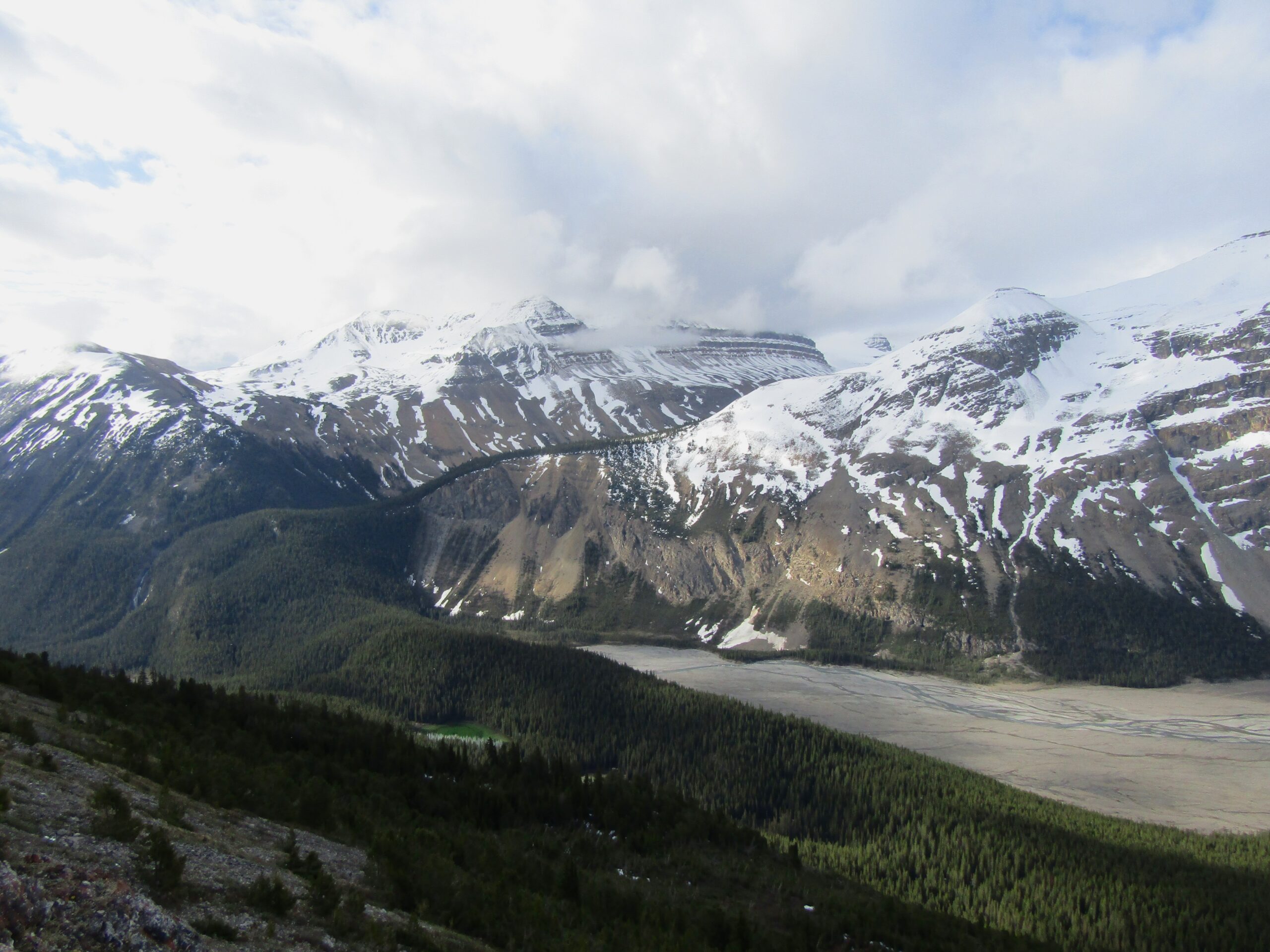
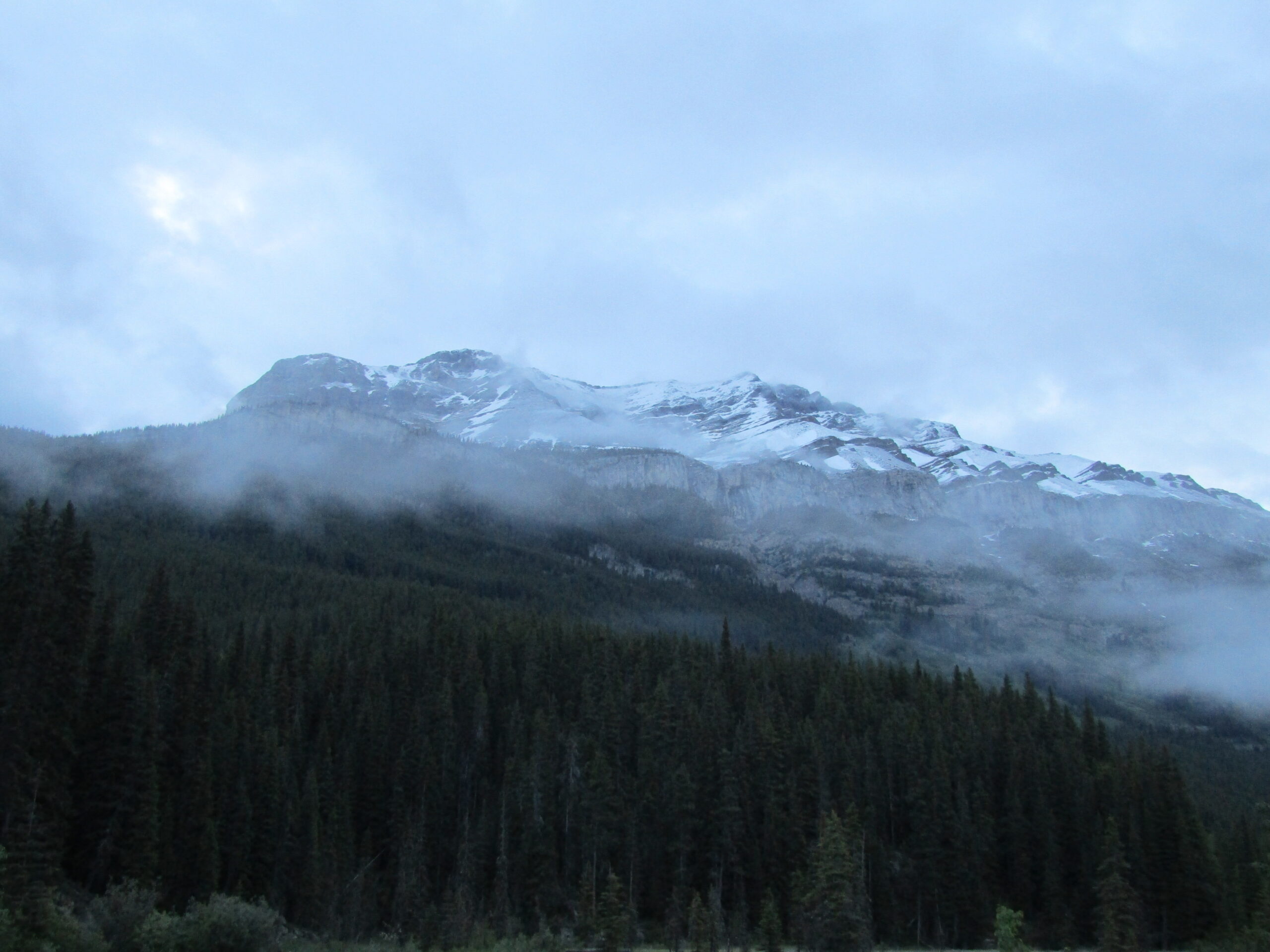
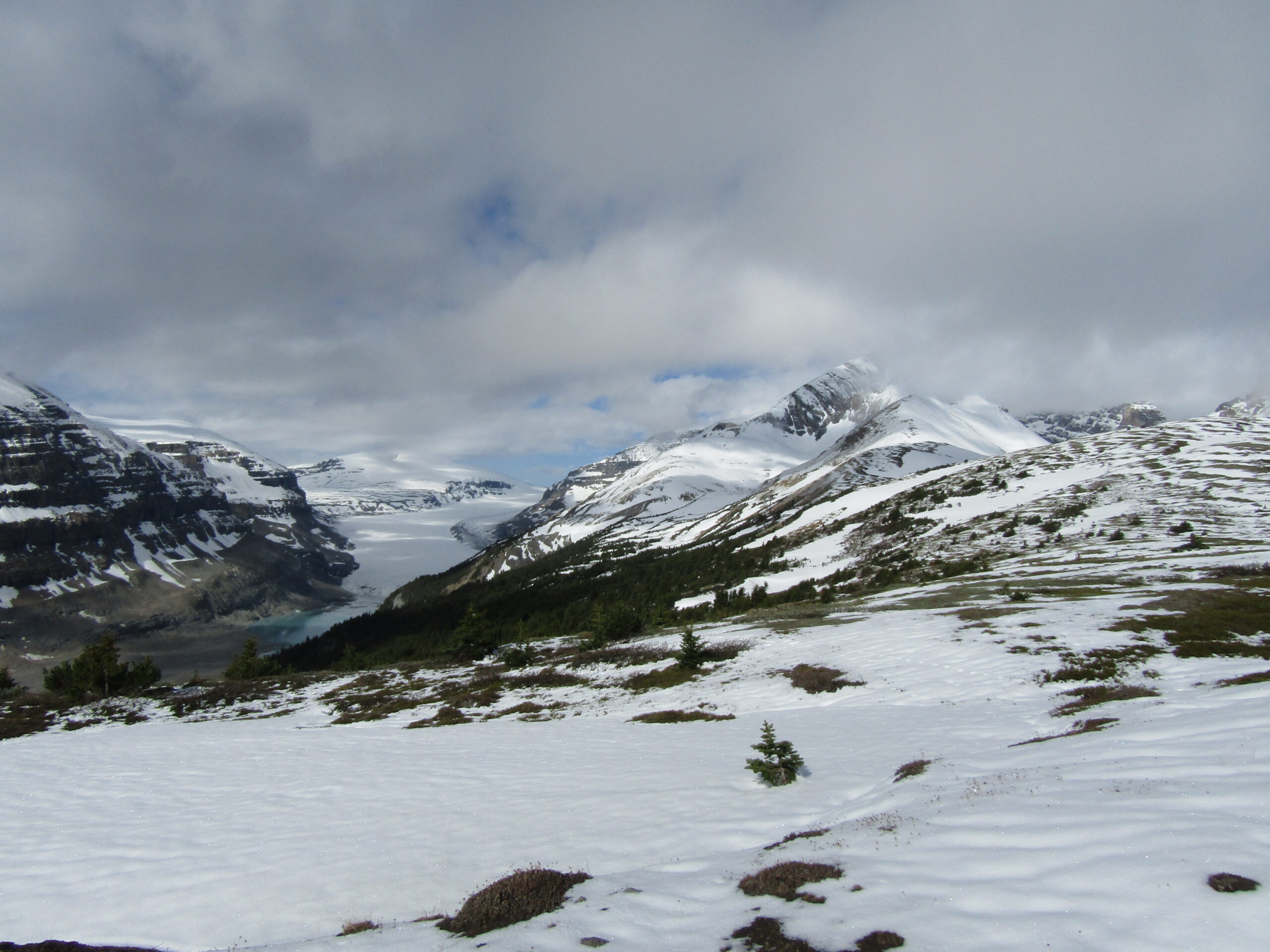
Separating Banff and Jasper National Parks is the extended Icefields Parkway. I presume the name comes from the glaciers found across the region. The road through is more elevated than the areas closer to Banff and Jasper, which means the temperatures are cooler – and overnight it dropped below freezing. In the early morning we braved the cold to do the relatively short hike at Parker’s Ridge – around a two-hour return. Here, I found myself completely at peace. The view is majestic. The bare alpine terrain overlooks forests both near and far, covering the mountain sides, as they slope into the valley between. And at either end, the land rises again, making the valley surrounded. On the north side sits a glacier – and while it appears to be breaking out, it is of course receding in – having created the valley below.
I couldn’t tell you when Banff turns into Jasper, though I believe the border is near the Icefield Parkway. The landscape remained similarly delightful throughout. The noticeable difference on our journey – which may be anecdotal – was the amount of wildlife we encountered in Jasper. Aside from a brief sighting of an elk, our other sightings in Banff consisted of small mammals and birds. The next half of our road trip contrasted in a large – and dramatic – way.